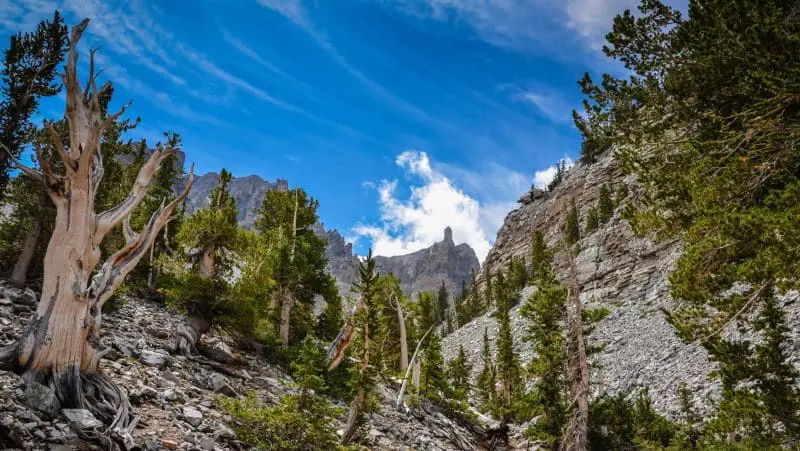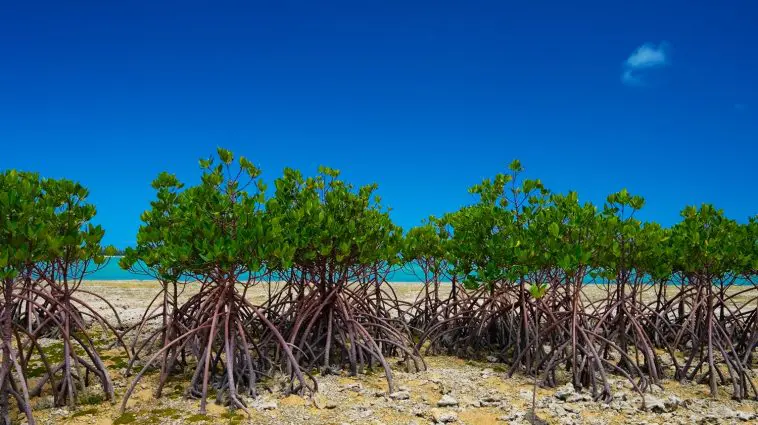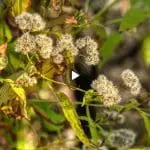God has created trees capable of living in areas you would never expect. Here are two examples:
The Red Mangrove
These trees grow along tropical coasts where tides cause seawater to flow in and out. Areas where red mangroves grow enjoy the protection they provide against wind and waves, minimizing shoreline erosion.
God designed these trees with the features they need to survive in such an intertidal habitat. Trunks sit on top of stilt-like aerial roots that grow down through the mud, anchoring the tree and gently dissipating the energy from the waves. Roots in such waterlogged mud have no access to oxygen while submerged, but the mangrove’s aerial roots are covered in pores that open and close with the tides. When exposed to the air at low tide, the pores open, allowing oxygen to flow in. When the tide rises, these pores close, preventing water from coming in.
The salt in seawater is another problem since it damages plant cells. This shoreline tree handles the problem by pumping salt into its oldest leaves, which then drop harmlessly away. The red mangrove tolerates salt better than even other species of mangroves, allowing it to grow farther from shore.
The red mangrove has creamy yellow flowers and grows leathery fruit about an inch long. The fruit starts to germinate while still on the tree, pushing out a single main root. If the seed drops in the mud its heavy root will plunge it into the mud where it can grow into a tree. But if the tide is in and the seed falls in the water, it will float. The ocean current will then carry it away, where it can find a new bit of shore to colonize.
The floating fruit is green and can photosynthesize, providing it energy to survive for up to a year until it reaches another shore, often more than a hundred miles from the parent plant.
The Bristlecone Pine

Many people have seen pictures of this pine tree with its gnarled and twisted trunk growing on some windswept mountain. The habitat is so harsh it is hard to imagine how any tree could grow there, but God gave such a capacity to the bristlecone pine.
The bristlecone pine grows in the Sierra Mountains in the states of California and Nevada at elevations between 5,600 and 11,200 feet. At such heights, winter temperatures plunge to -15° F. There are constant strong winds and the rocky soil provides few nutrients. Likewise, these mountains offer little rainfall because they lie in the rain shadow of the Rocky Mountains to their west. What moisture does fall comes in the form of snow, making water available only for the short time of the spring melt. All these factors limit the growing season to an extremely short span of less than two months. These trees spend the rest of the year in a dormant state.
Because of such environmental factors, the bristlecone pine grows very slowly. Researchers need a microscope to count the tree rings.
Under the most favorable conditions, a bristlecone pin can grow to a height of sixty feet. This only happens at high elevations where the most snow gathers and the spring melt provides the most moisture. Trees at lower elevations, with less snow max out at only around a third of that height.
In many of the oldest pine trees, the trunk is dead around most of their girth, with only a narrow strip of living tissue connecting the roots with the top growth. This strip is on the protected side of the trunk, allowing the hard, dead side to take the brunt of sand and ice crystals in windstorms.
All these factors explain why such twisted and battered trees to survive to great ages despite being half dead. The same conditions that make things difficult for them also keep fungi and insects from decaying their dead wood, preventing rot and disease from completely destroying them.
The red mangrove and the bristlecone pine both live in areas so harsh that few other trees could survive there. God created both of these trees with the specific adaptations they need to grow.
And God said, “Let the earth put forth vegetation, plants yielding seed, and fruit trees bearing fruit in which is their seed, each according to its kind, upon the earth.” Genesis 1:11






